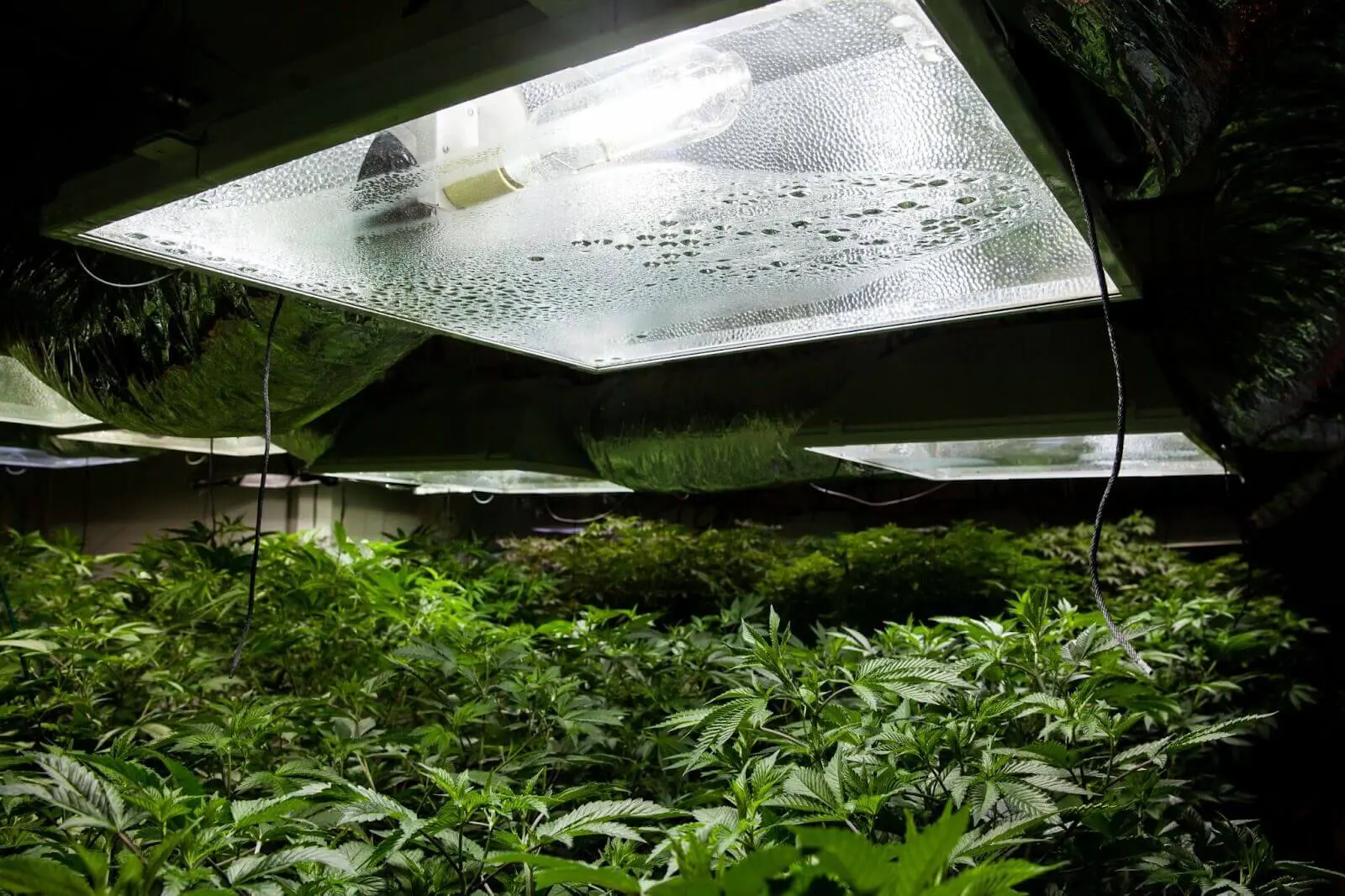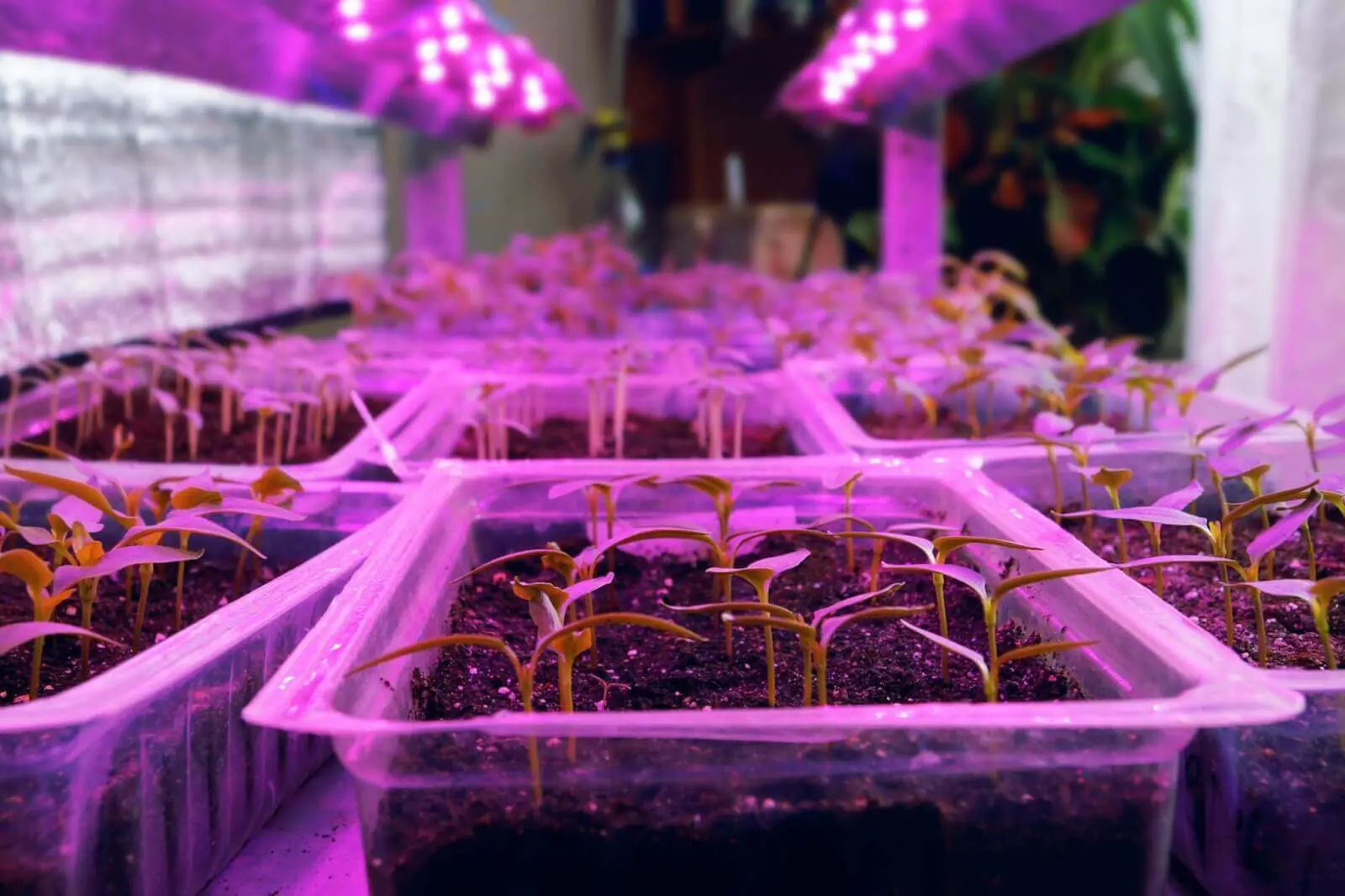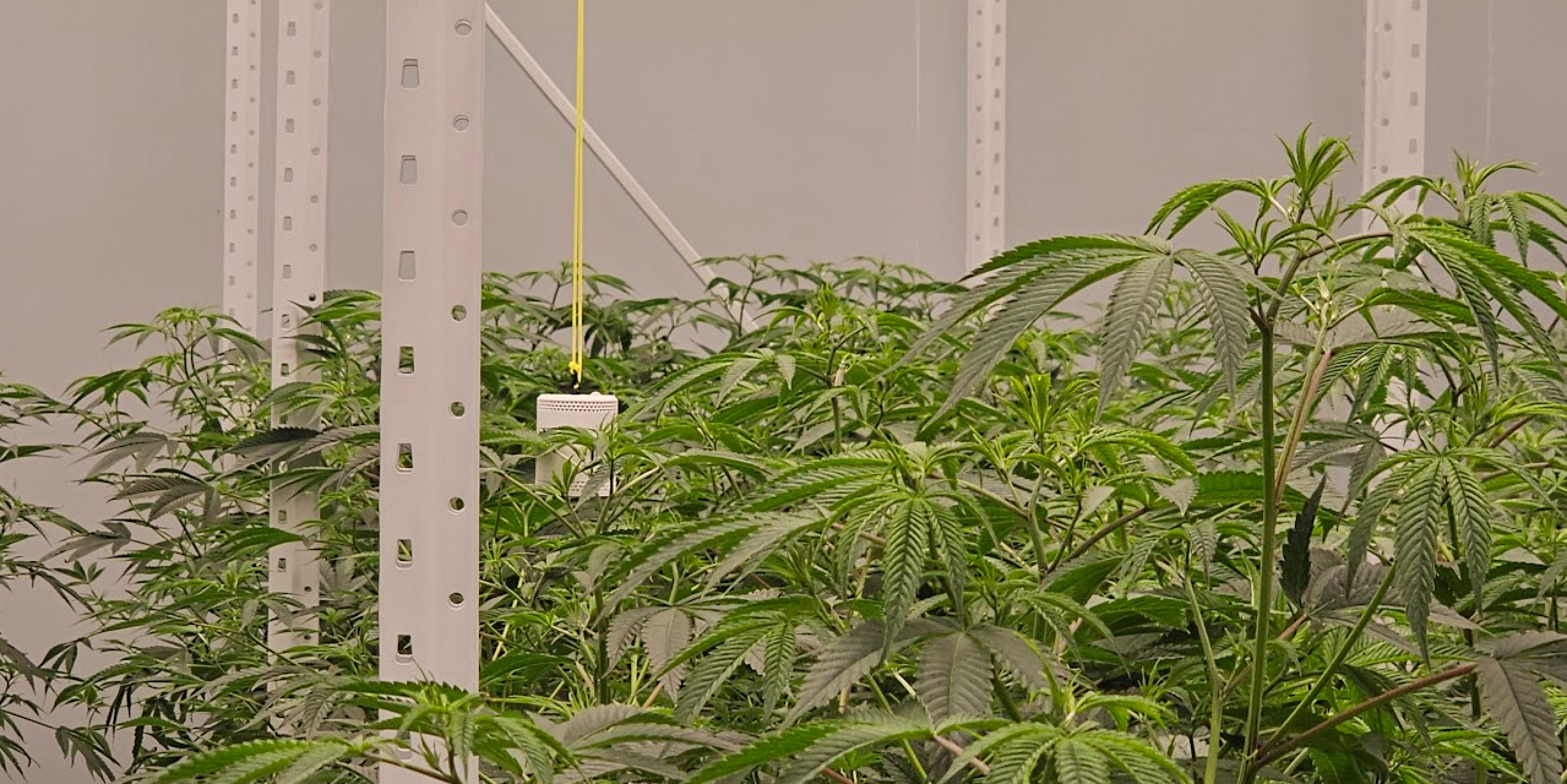What's the difference between PPFD and daily light integral?


Light is crucial in cultivating plants, influencing their growth and health.
But things can get a bit technical when it comes to understanding light's impact.
Two key terms often pop up: PPFD (Photosynthetic Photon Flux Density) and Daily Light Integral (DLI). While they might sound complex, they're essential for anyone keen on growing indoors.
In this post, we're diving into what PPFD and DLI really mean and how they differ. Whether you're a pro-grower or a hobbyist, understanding these concepts is vital for nurturing your plants.
Disclaimer: Any information given on this site is for educational purposes only. Please ensure if you’re growing cannabis, you’re doing so by the law and subject to appropriate permissions and licenses of the applicable country.

Understanding PPFD (photosynthetic photon flux density)
PPFD stands for Photosynthetic Photon Flux Density. Simply, it measures the amount of light that reaches a plant.
More specifically, PPFD quantifies the number of photosynthetically active photons landing on a square meter per second. Think of it like the sun's rays hitting a patch of soil or a leaf.
This measurement is crucial because it tells us how much light, within the spectrum that plants use for photosynthesis, is actually available to them.
The value of PPFD isn't constant; it changes based on how close the plant is to the light source and the angle at which the light hits it. This variability means that not all parts of a plant may receive the same amount of light.
Understanding PPFD lets you strategically place lights to ensure each plant gets the right amount of light.

Exploring daily light integral (DLI)
Daily Light Integral, or DLI, is all about the big picture of light exposure for plants. While PPFD measures the instant amount of light, DLI sums up the total amount of light a plant receives in a day. It's measured in moles of light per square meter per day.
Imagine a bucket collecting rain over a day; DLI is similar, but instead of rain, it's collecting the light that falls on your plants.
DLI is crucial for understanding how different plants thrive. Some plants need lots of light, while others do well with less. This measurement helps in making informed decisions about how and where to place plants within your indoor grow setup.
It's not just about the intensity of the light either, but how long that light is available too. By monitoring DLI, you can adjust your growing strategies. It could involve changing light durations for indoor setups to mimic natural conditions.
DLI guides us in providing the right 'dose' of light for healthy plant growth.

Comparing PPFD and DLI
Understanding the distinction between PPFD and DLI is like comparing snapshots to time-lapse photography.
PPFD is a snapshot; it tells us about the light intensity at a specific moment and location. Understanding if your plants are getting enough light right now is crucial.
On the other hand, DLI is like a time-lapse, capturing the total amount of light a plant receives over an entire day.
Let's put it into perspective. A plant under a grow light might receive a high PPFD, indicating intense light at a given moment. However, if the light is only on for a few hours a day, the DLI might be low. This means the plant isn't getting enough light over time.
Conversely, a plant in a less intense but longer-lasting light environment might have a lower PPFD but a higher DLI, which could be more beneficial overall.
Both PPFD and DLI serve different, yet complementary, purposes in indoor growing. PPFD helps in fine-tuning the immediate lighting conditions. DLI ensures the cumulative light exposure is on target for optimal plant growth.
For gardeners and growers, this means balancing both measurements to create the ideal environment for their plants. It's not just about turning up the light intensity; it's also about ensuring the plants get enough light hours in a day.
The significance of PPFD & DLI in indoor growing
When you grow indoors, both PPFD and DLI are invaluable tools for cultivating healthy, thriving plants.
By understanding and using these metrics, you can create the most effective lighting conditions for your plants.
PPFD is a key metric. It helps you to determine the right type and placement of your grow lights.
Adjusting the height and intensity of these lights to achieve the desired PPFD ensures that each plant receives the optimum amount of light for photosynthesis. This is especially crucial in controlled environments where natural light is limited or absent.
DLI, on the other hand, helps in understanding the cumulative light exposure of plants. In grow rooms or tents, it guides the duration of artificial lighting needed daily.
By monitoring DLI, you can mimic natural light patterns. This ensures plants receive a naturalistic and healthy amount of light over time.
Incorporating both PPFD and DLI into horticultural practices allows for a more nuanced approach to plant care. It's not just about providing light; it's about providing the right kind and amount of light for the specific needs of each plant species.
This approach leads to healthier plants, more efficient growth, and, ultimately, better yields.

The impact of PPFD & DLI on plant growth
A study examined how bright light and UV light affect the growth of a type of cannabis called 'Meridian.' The study found that cannabis yield increased proportionally with light intensity.
Specifically, plants grown under average canopy photosynthetic photon flux densities (PPFD) of 600, 800, and 1,000 μmol m^−2 s^−1 showed all aboveground biomass metrics being 1.3–1.5 times higher in the highest versus the lowest PPFD treatments.
Most notably, the inflorescence dry weight, a crucial economic parameter, was 1.6 times higher in the highest PPFD treatment compared to the lowest.
Additionally, plants in the highest PPFD treatment allocated relatively more biomass to inflorescence tissues, with a 7% higher harvest index.
This study demonstrated that careful management of PPFD and DLI levels can substantially increase cannabis yield in indoor cultivation settings.
Managing PPFD and DLI
Monitoring PPFD and DLI in grow rooms is crucial for optimal plant growth, and advanced tools like the Grow Sensor make this task more manageable and precise. Here's how the Grow Sensor, our smart grow room monitor, can be a game changer when managing these parameters:

Real-time monitoring and alerts
The Grow Sensor provides real-time data on crucial environmental parameters, including light intensity (PPFD/PAR) and DLI. This allows growers to make immediate adjustments to lighting, ensuring plants receive the ideal PPFD and DLI.
Comprehensive environmental tracking
Besides light, the Grow Sensor tracks temperature, humidity, CO2 levels, and VPD (Vapour Pressure Deficit), all of which play a role in plants' effective utilisation of light.
Remote access and control
With its easy-to-use app for Apple and Android devices, growers can monitor and adjust their grow room settings from anywhere, ensuring continuous optimisation of the light environment.
Enhanced accuracy and reliability
The Grow Sensor is designed for high accuracy and features advanced sensors for reliable data collection. This precision is vital for correctly measuring and adjusting PPFD and DLI.
Energy efficiency and cost-effectiveness
By providing insights into the grow room's environment, the Grow Sensor helps optimise energy use, thereby reducing costs and enhancing light use efficiency.
Integrating smart technology like the Grow Sensor in grow rooms empowers you to maintain the ideal PPFD and DLI for your plants. This leads to healthier growth, better yields, and more efficient operations.
Takeaways
In exploring PPFD and DLI, we've delved into their distinct roles in plant growth.
PPFD, akin to a momentary snapshot of light intensity, is crucial for understanding the immediate light environment of plants. DLI, on the other hand, offers a comprehensive view of cumulative light exposure over time.
Both metrics are indispensable in indoor growing, each playing a unique role in optimising plant health and productivity. Understanding the difference and interplay between PPFD and DLI is essential for any grower.
It's not just about providing light; it's about providing the right kind of light in the right amounts. This knowledge empowers us to create optimal growing conditions, leading to healthier plants and more bountiful yields.
As we've seen through various studies and examples, the strategic use of PPFD and DLI can significantly impact plant growth, flowering, and yield.
Mastering these concepts can enhance your gardening practices and contribute to more successful and sustainable cultivation.

FAQs
Is PPFD the same as light intensity?
PPFD and light intensity are related but not exactly the same. Light intensity generally refers to the amount of light that falls on a surface and is often measured in lux or lumens.
PPFD, on the other hand, specifically measures the number of photosynthetically active photons that fall on a given area per second. It is measured in micromoles per square meter per second (μmol/m^2/s).
Does PPFD change with distance?
Yes, PPFD changes with distance from the light source. As you move further away from a light source, the amount of light (in terms of PPFD) that reaches a given area decreases rapidly.
This is a critical factor in plant lighting, as it means that plants located further from the light source receive significantly less light, affecting their growth and development.
What is the daily light integral?
The Daily Light Integral (DLI) measures the total amount of photosynthetically active radiation (PAR) received in a specific area over a 24-hour period.
It is expressed in moles of light per square meter per day (mol/m²/day). DLI helps you to understand the cumulative effect of light on plant growth, considering both the intensity and duration of light exposure. It's a crucial factor in growing as different plants have different DLI requirements for optimal growth.
Is lux and PPFD the same thing?
No, Lux and PPFD (Photosynthetic Photon Flux Density) are not the same.
Lux is a unit of illuminance, measuring the total amount of visible light that falls on a surface. It takes into account the sensitivity of the human eye to different wavelengths of light.
PPFD, on the other hand, specifically measures the number of photons in the photosynthetically active radiation (PAR) range (400 to 700 nanometers) that fall on a surface per second. It is more relevant for plant growth as it focuses on the light used in photosynthesis.
While both are related to light measurement, PPFD is specific to plant growth and photosynthesis, whereas lux is more about human vision and general illumination.








.avif)








